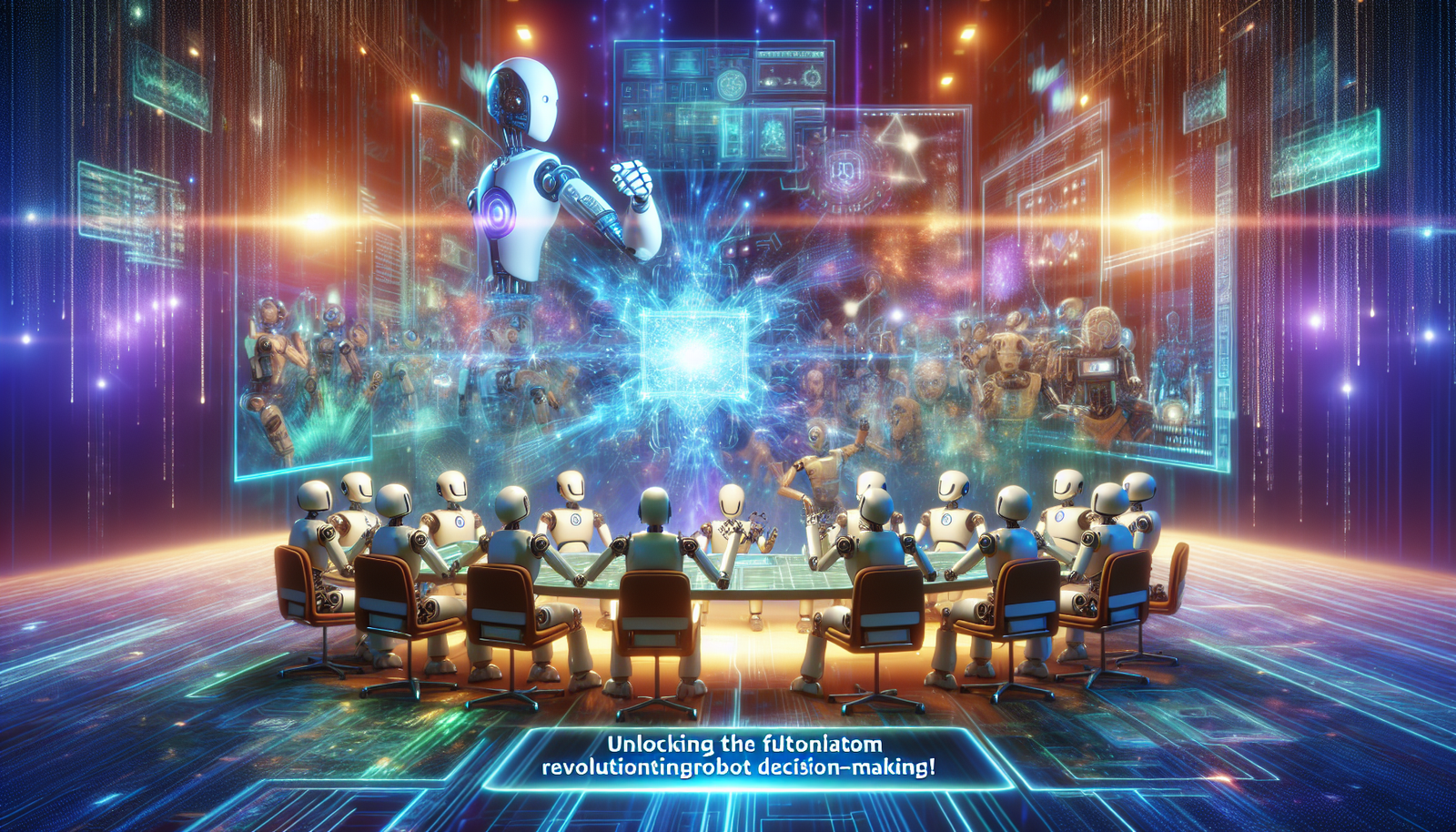Revolutionary advances in artificial intelligence are shaking the standards of modern robotics. An innovative algorithm, named *Spectral Expansion Tree Search (SETS)*, promises to radically redefine robots’ decision-making. This intelligent mechanism enables machines to optimize their movements with unmatched speed, while adapting in real-time to dynamic environments.
Unprecedented performance emerges when robots rely on a unique algorithm to navigate unforeseen situations. This innovation facilitates the exploration and exploitation of various paths, ensuring informed and safe decisions. The strategic stakes of this technology go beyond mere technical considerations; they give rise to fascinating prospects for the future of autonomous robotics.
Spectral Expansion Tree Search Algorithm (SETS)
Caltech has recently developed the Spectral Expansion Tree Search (SETS) algorithm, optimizing robots’ decision-making. This innovative system allows robots to navigate their environment autonomously. SETS leverages dynamic simulations to assess possible movements, identifying the one that guarantees the greatest safety and efficiency.
Design and Operation
The robots’ decision-making process begins with a strategizing of potential actions. Professor Soon-Jo Chung emphasizes that a high number of options are explored to select the best movement. The simulations resemble game-like scenarios, conducted in various contexts, allowing the algorithm to replicate real-life situations. This approach stands out from traditional optimization methods, which are often less effective in finding safe solutions.
Diverse Applications
SETS adapts to various robotic platforms, offering surprising flexibility. Practical trials have involved several types of robots, including a drone, a ground vehicle, and spacecraft. Each example highlights the algorithm’s ability to orchestrate thoughtful movements regardless of the type of robot used.
Exploitation and Exploration
The algorithm introduces a balance between exploration and exploitation. When a robot evaluates its potential actions, it does not waste time simulating unsuccessful trajectories. For instance, if a direction leads to a wall, the robot avoids those options to focus on promising alternatives. Benjamin Rivière, co-lead author of the study, highlights that this real-time optimization enhances the overall performance of robots.
Real-World Testing
SETS testing has been conducted in varied environments. The first trial involved a drone navigating through obstacles while avoiding dangerous air currents. In another test, a vehicle was assisted to maneuver along a winding path without collision. Finally, spacecraft were used for manipulations requiring the capture and redirecting of celestial objects.
Sustainability and Future of the Project
The potential of SETS could revolutionize autonomous robotics. Its application to an Indy car racing vehicle, as part of the Indy Autonomous Challenge, is scheduled for January 2025. Researchers anticipate similar advances in other fields, intensifying the integration of artificial intelligence into varied environments.
References and Validations
Publications: The technical details of SETS are presented in a study published in Science Robotics. Preliminary results are promising, revealing a vast field of potential applications.
For more information, please refer to the original article on Science Robotics.
Researchers continue to explore the possibilities offered by this innovative algorithm, aiming to further embed AI into the fabric of our daily interactions with robots.
Frequently Asked Questions about Real-Time Decision-Making Optimization for Robots
What is the Spectral Expansion Tree Search (SETS) algorithm?
SETS is an algorithm developed to assist robots in planning and making decisions in real-time by efficiently exploring possible movements to select the best option while navigating in a dynamic environment.
How does SETS improve robots’ decision-making?
SETS uses an exploration/exploitation approach to simultaneously evaluate multiple possible trajectories, allowing robots to avoid collisions and optimize their movements while quickly adapting to changes in their environment.
What are the practical applications of the SETS algorithm?
SETS has been successfully applied in several fields, including drone navigation, autonomous vehicle driving, and object manipulation in space, demonstrating its versatility and effectiveness in various robotic scenarios.
What types of robots can benefit from the SETS algorithm?
Virtually all types of robots, whether aerial, terrestrial, or space-based, can benefit from the advantages offered by SETS, as the algorithm does not require specific programming for each platform.
What is the speed of the SETS algorithm in terms of movement simulation?
SETS is capable of performing a complete search in a decision tree in about one-tenth of a second, allowing it to simulate thousands of trajectories and quickly choose the best option.
How can SETS operate in complex and unpredictable environments?
Thanks to its exploration/exploitation mechanism, SETS enables robots to adapt in real-time to unexpected obstacles or environmental changes, ensuring effective decision-making even in unpredictable situations.
What are the potential limitations of the SETS algorithm?
Although SETS is highly effective, its performance may decrease in extremely complex environments where the diversity of possible movements exceeds the simulation capability, but ongoing improvements help refine its performance.
How do researchers evaluate the effectiveness of SETS in real-world contexts?
Researchers evaluate SETS by testing it in experimental scenes and measuring its ability to accomplish specific tasks while avoiding obstacles, comparing its decisions with traditional optimization methods.
How does SETS differ from other planning algorithms?
SETS stands out for its ability to effectively combine the exploration of unexamined options with the exploitation of already promising options, significantly increasing the speed and accuracy of decisions made by the robot.






